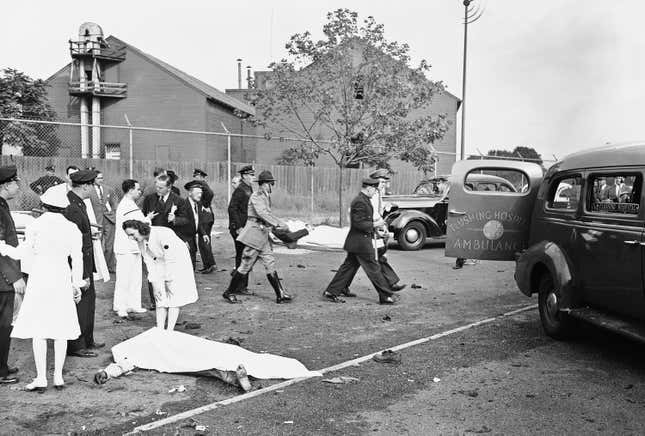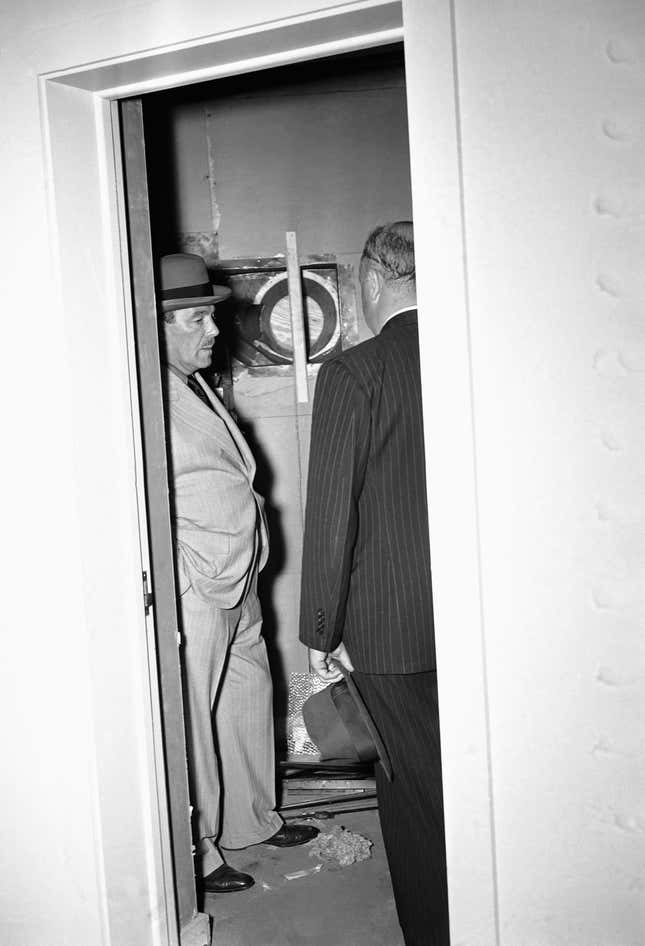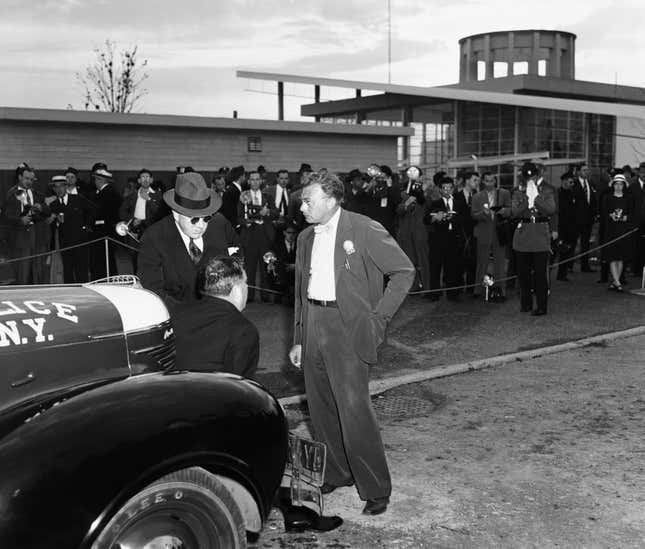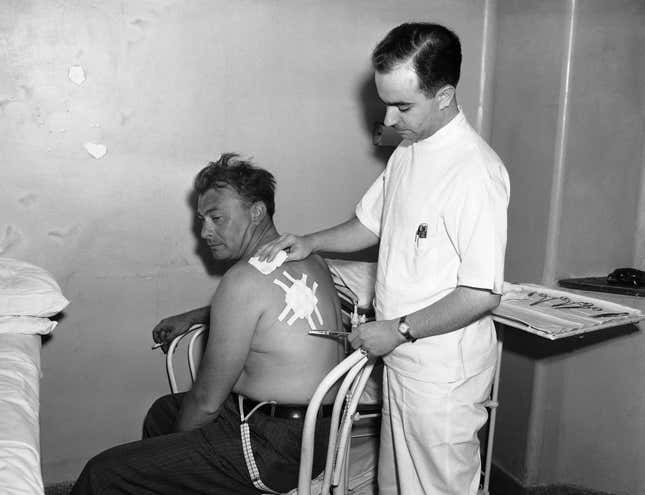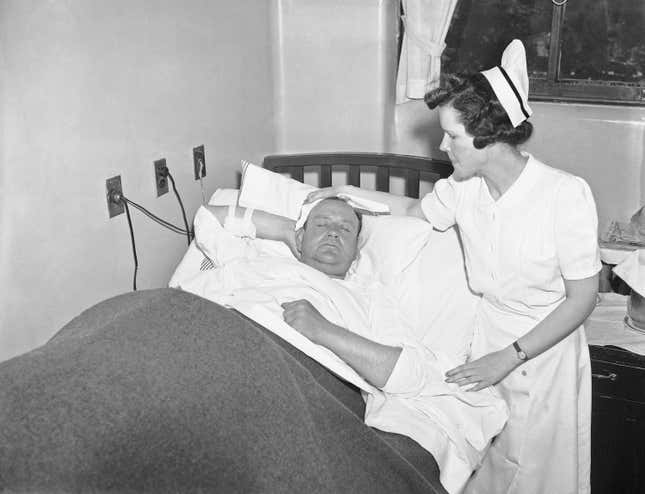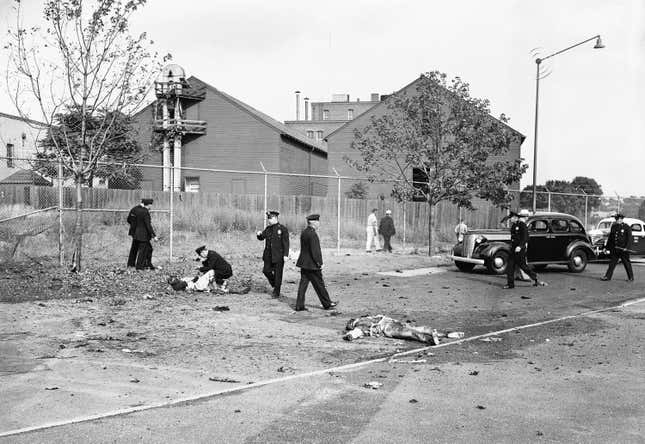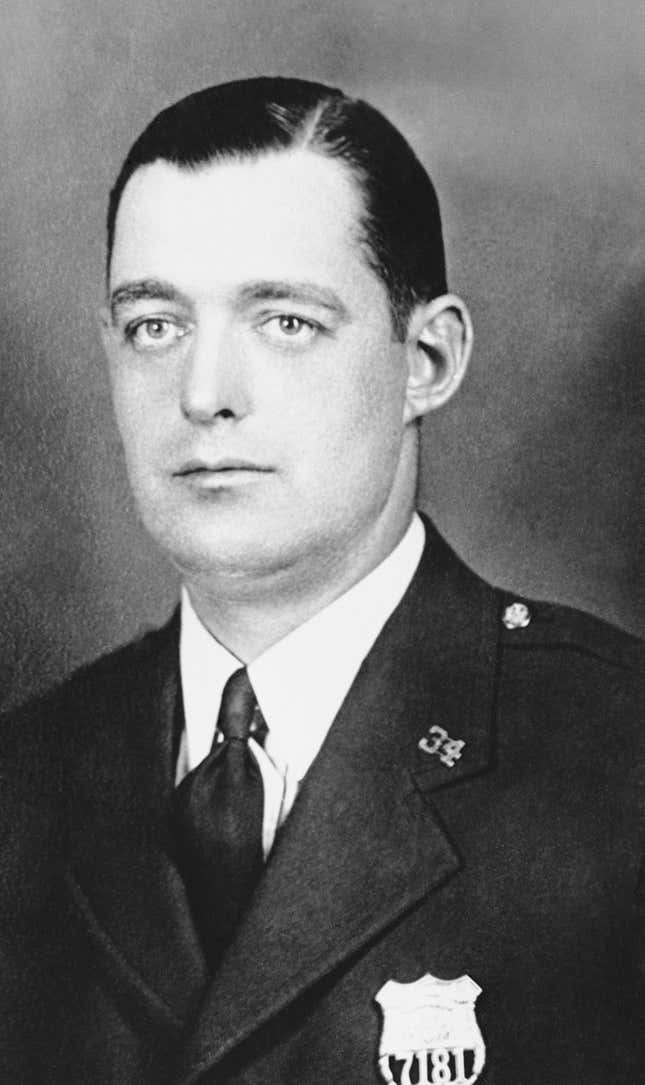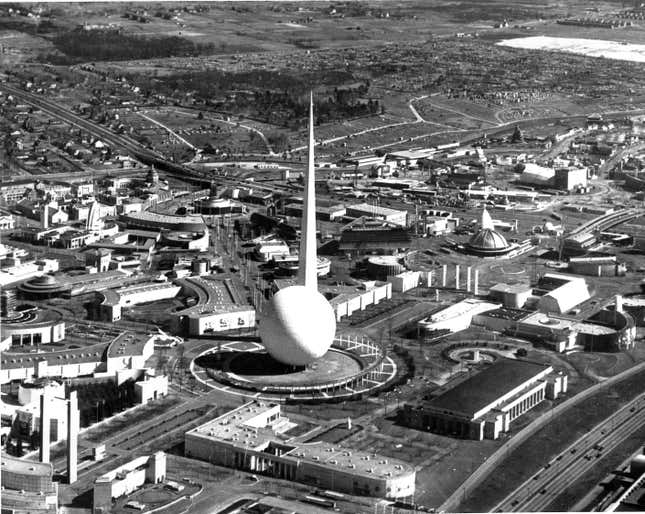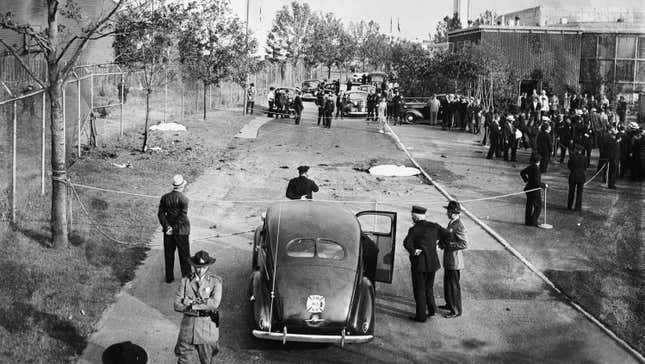
The 1939-40 New York World’s Fair had amazing robots, futuristic rides, and tech-inspired fashion. It was also television’s coming out party, with a very cool public demonstration of TV. But did you know there was also a terrorist incident when someone placed a time-bomb there? The explosion killed two police officers who were trying to remove it, and we still don’t know who did it.
In early July of 1940, the British Pavilion received a death threat via phone that the building would be blown up. The unknown caller simply said, “get everyone out before the box explodes,” according to an Associated Press article from the time.
The cops cased the pavilion for two days but didn’t find anything. Finally, on July 4, 1940, an electrician stumbled upon a bag reportedly made to look like a portable radio, according to news accounts of the time. It was ticking.
The cops were called in and rushed the bag outside behind the nearby Polish exhibit. Two police officers were inspecting the package around 5:00 p.m., found it contained dynamite, and it detonated shortly after that.
There were two deaths, including 33-year-old Joseph J. Lynch and 35-year-old Ferdinand A. Soha, and five other police officers were injured. And while a hefty reward was offered, the perpetrator was never caught, and a motive was never established. Police believed at the time it was a possible a robbery of 39 sticks of dynamite the previous May might have been connected, and they even arrested a 38-year-old Nazi named Caesar Kroeger for possessing firearms without a license, but he was never formally tied to the bombing.
Chillingly, the telephone operator who received the call at the British Pavilion, a woman named Marjorie Rosser, received a death threat at her home the day after the bombing. But to this day, nobody knows who actually committed the crime.
It’s easy to forget America’s violent history when you’re perusing the internet for pictures of the country’s technological and cultural high points. The 1939 New York World’s Fair was filled with high-tech achievements and few people today remember there was a terrorist bombing there. But as James Mauro, author of Twilight at the World of Tomorrow: Genius, Madness, Murder, and the 1939 World’s Fair on the Brink of War, notes in his work, bombings were surprisingly common in the 1930s.
As Mauro writes:
On Sept. 11, 1938, two huge explosions rocked the fur district along West 29th Street. On June 20, years 1940, a pair of time bombs ripped open office buildings on Battery Place and East 12th Street. Bomb threats reached a peak of nearly 400 every week. We like to think of those days as innocent, softened by the selective memory of nostalgia, but prewar New York City was perhaps as dangerous then as it is today when it comes to acts of terrorism.
You can click through for more images of the aftermath from the 1940 World’s Fair bombing, but viewer discretion is advised.
